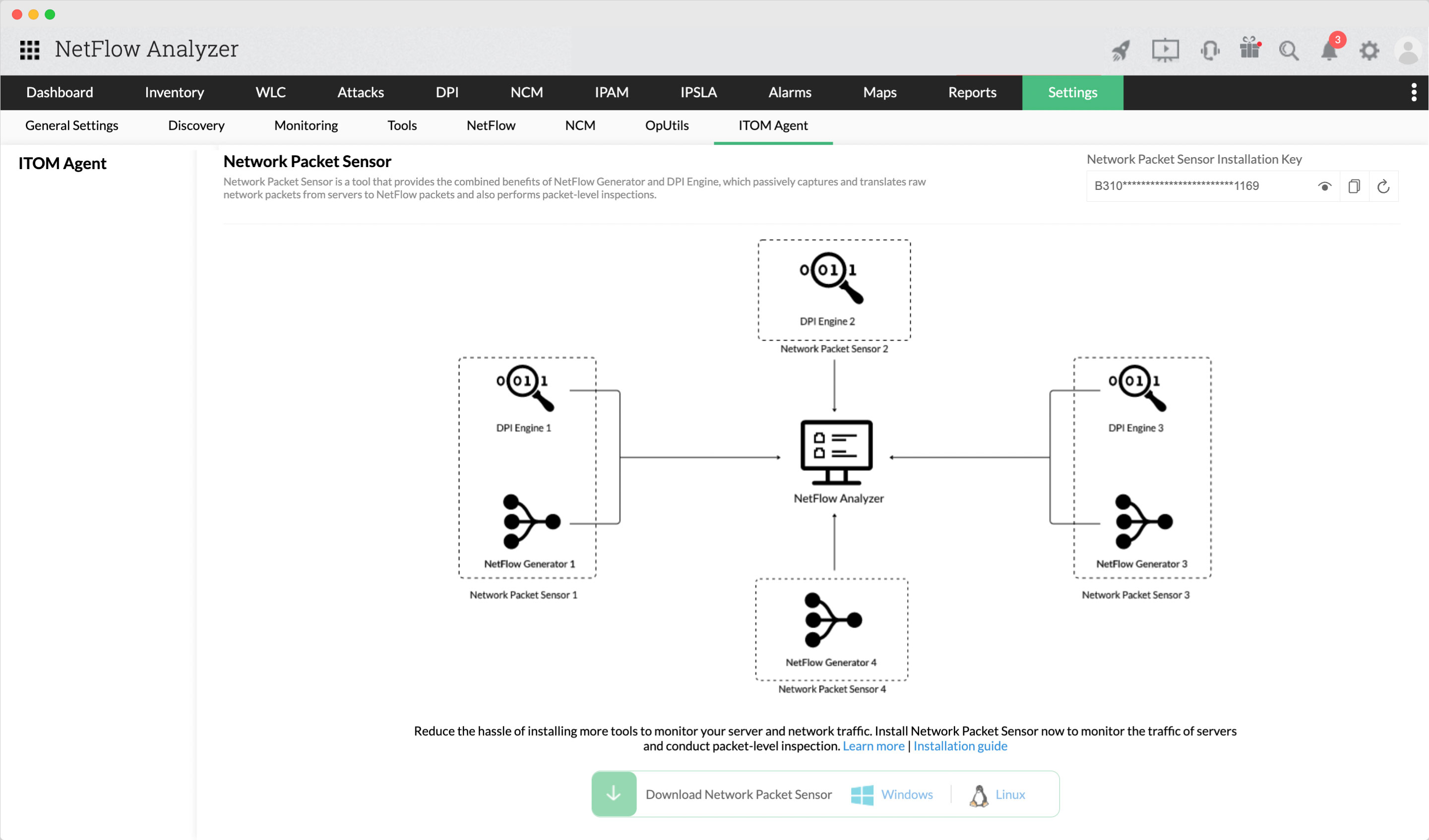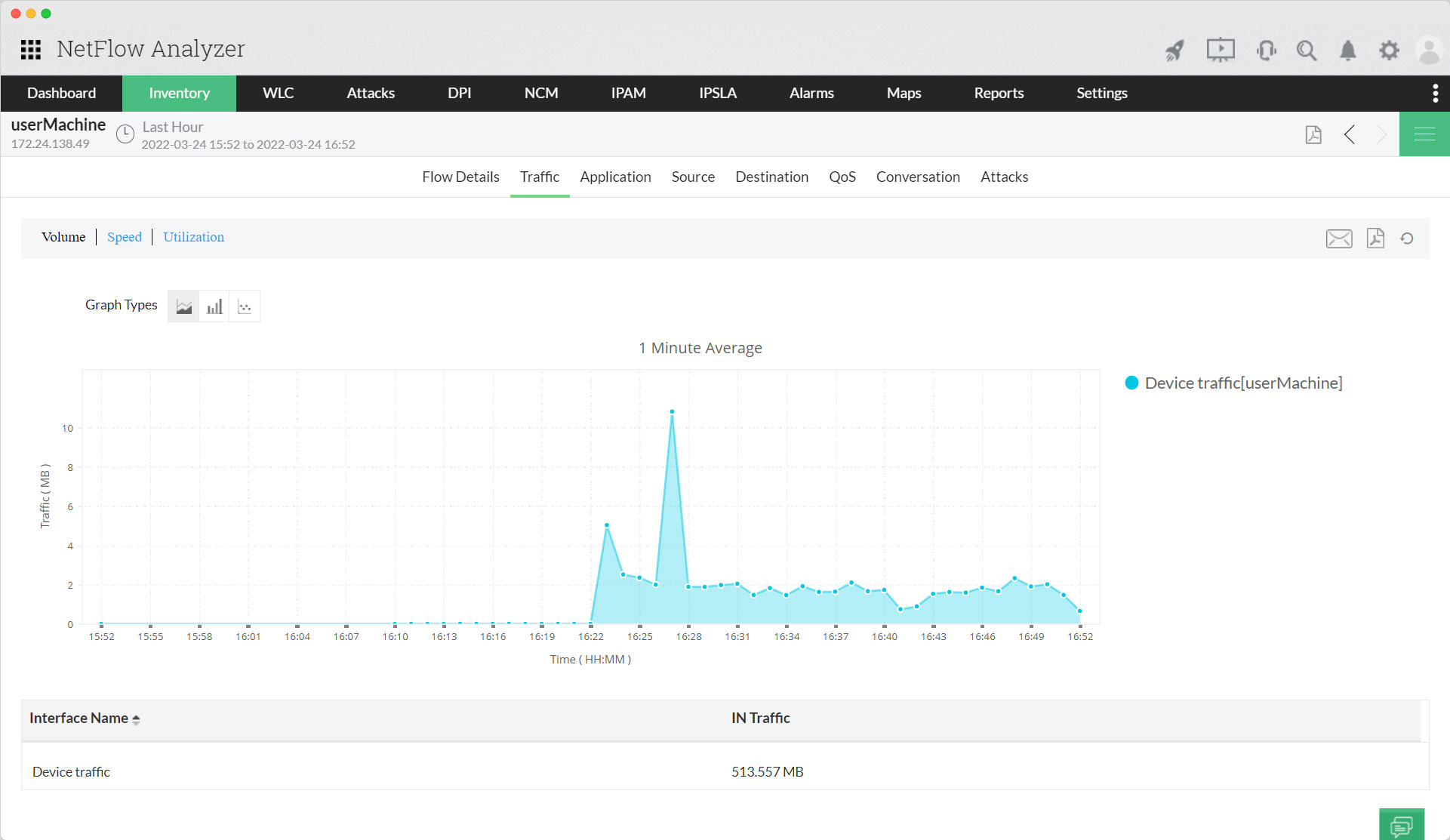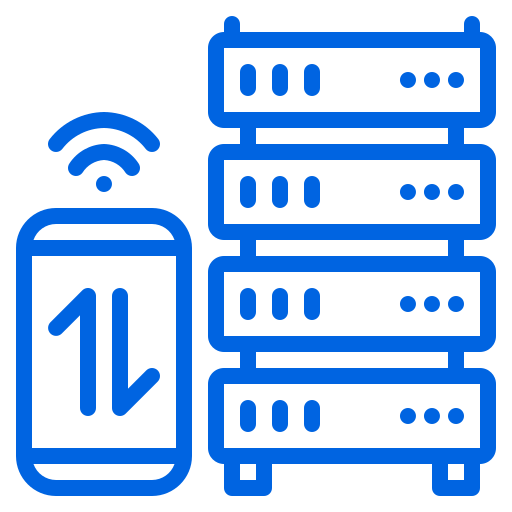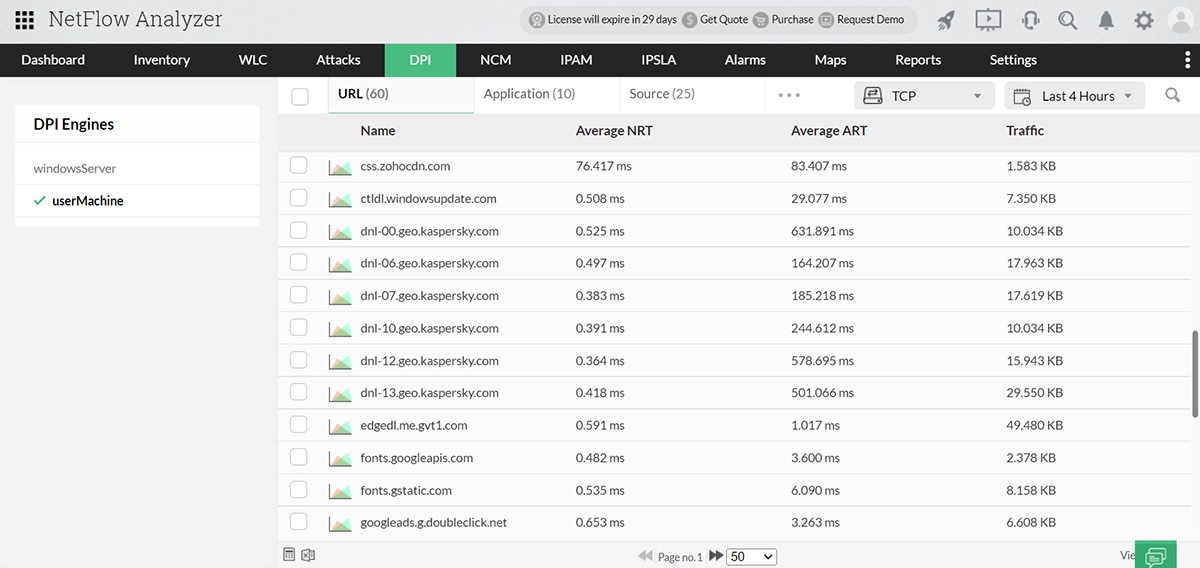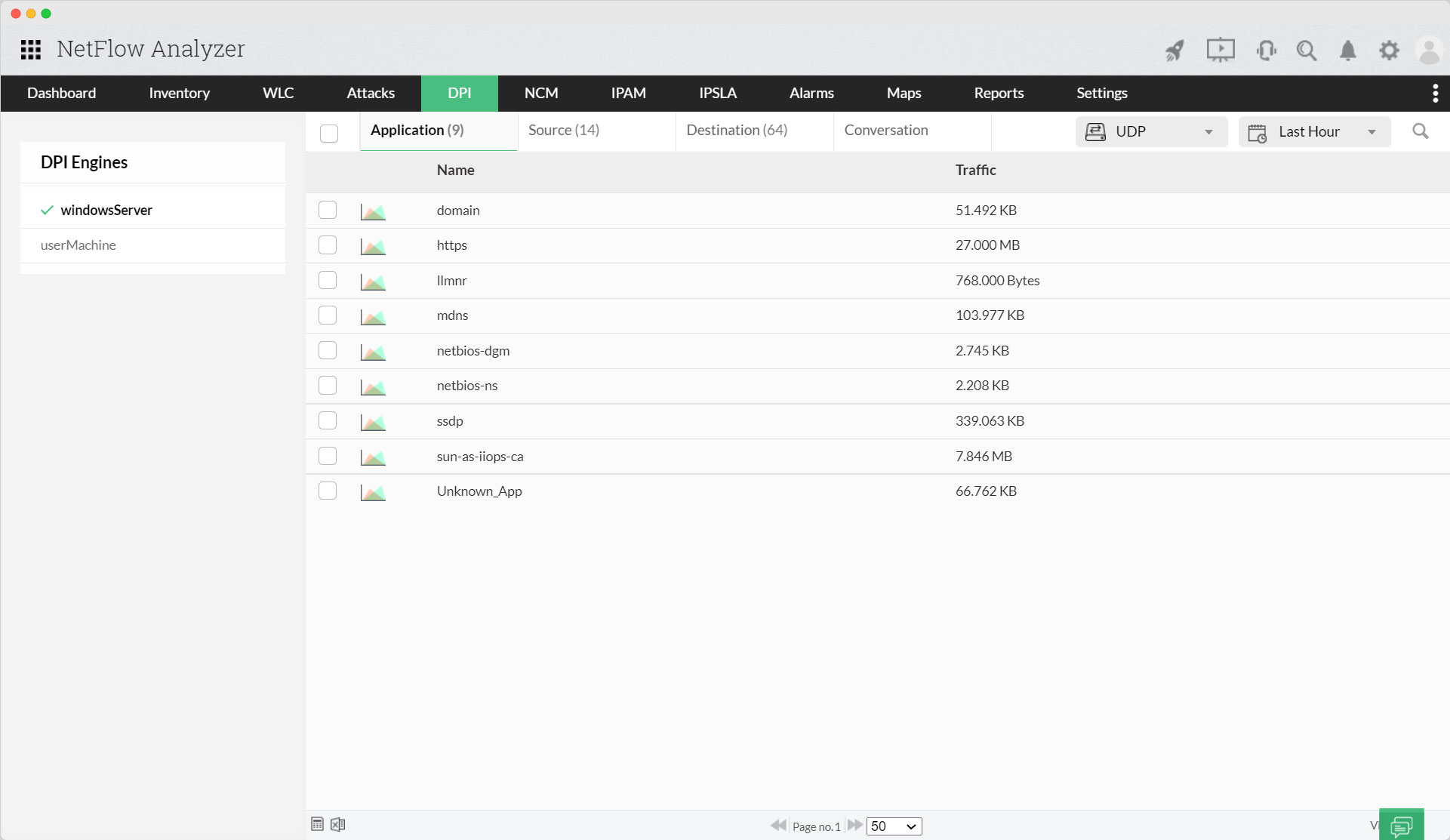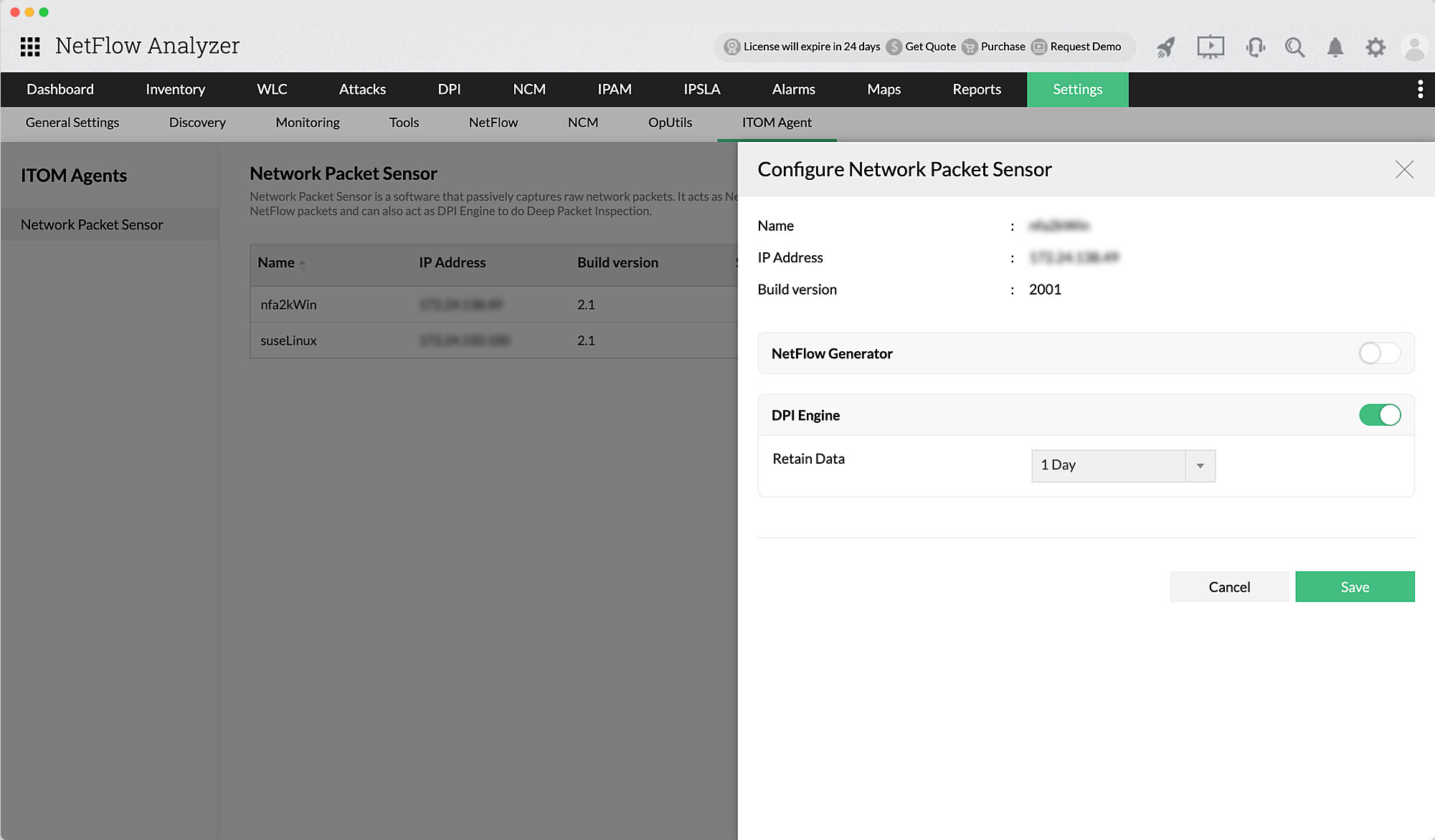The Network Packet Sensor, a new addition to our comprehensive bandwidth monitoring tool NetFlow Analyzer, uses both flow analysis and packet capture methods. This agent will provide you with in-depth insights about which element is at fault, whether its the network, server, or application.
The Network Packet Sensor combines the functions of NetFlow Generator and deep packet inspection (DPI). The Network Packet Sensor can either be configured as a NetFlow Generator, a deep packet inspection engine, or both depending on your requirements.


